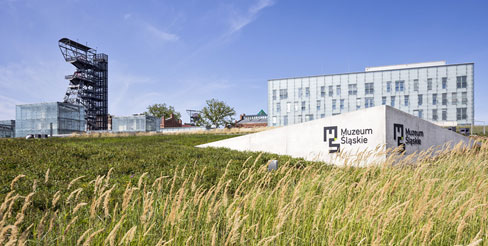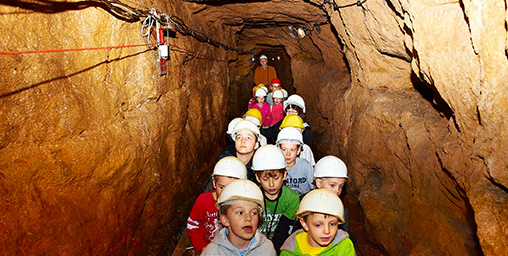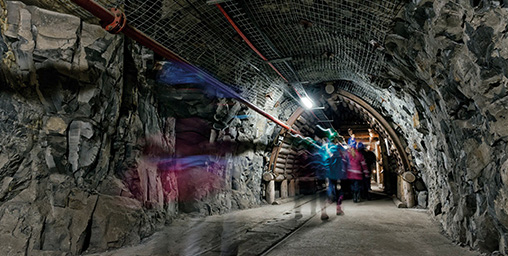Discover Katowice
Tourist attractions

SPODEK

THE POLISH NATIONAL RADIO SYMPHONY ORCHESTRA

INTERNATIONAL CONGRESS CENTRE

Silesian Museum, Katowice

Nikiszowiec Housing Estate

GISZOWIEC

ROUTE OF MODERNISM

THE ROUTE OF NEON SIGNS

THE ROUTE OF MURALS

THE SILESIAN BLUES ROUTE

THE ACADEMY OF MUSIC

Museum of Katowice History

Silesian Freedom and Solidarity Centre

INDUSTRIAL MONUMENTS ROUTE

LAS MURCKOWSKI (THE MURCKI FOREST)

SILESIA PARK

Pszczyna - Castle Museum

MUSEUM OF THE DUKE’S BREWERY IN TYCHY

HISTORIC SILVER MINE

GUIDO MINE

THE SILESIAN OPERA
For more information about tourist attractions of the Silesian Voivodeship, please visit the website
| AIzaSyCKrhb4_no4YAP_xBYxu9OLjtFniaxk65M |
| /assets/mapa/template.html |
| /atrakcje_en.htm |
| /assets/mapa/pin.png |
| {"streetViewControl": false, "mapTypeControl": false, "fullscreenControl": false, "styles": [ { "featureType": "administrative.country", "elementType": "geometry.fill", "stylers": [ { "saturation": "46" } ] }, { "featureType": "landscape.man_made", "elementType": "geometry", "stylers": [ { "color": "#f7f1df" } ] }, { "featureType": "landscape.man_made", "elementType": "geometry.fill", "stylers": [ { "saturation": "53" } ] }, { "featureType": "landscape.natural", "elementType": "geometry", "stylers": [ { "color": "#d0e3b4" } ] }, { "featureType": "landscape.natural.landcover", "elementType": "geometry.fill", "stylers": [ { "saturation": "60" } ] }, { "featureType": "landscape.natural.terrain", "elementType": "geometry", "stylers": [ { "visibility": "off" } ] }, { "featureType": "landscape.natural.terrain", "elementType": "geometry.fill", "stylers": [ { "color": "#714444" } ] }, { "featureType": "poi", "elementType": "labels", "stylers": [ { "visibility": "off" } ] }, { "featureType": "poi.business", "elementType": "all", "stylers": [ { "visibility": "off" } ] }, { "featureType": "poi.medical", "elementType": "geometry", "stylers": [ { "color": "#fbd3da" } ] }, { "featureType": "poi.park", "elementType": "geometry", "stylers": [ { "color": "#bde6ab" } ] }, { "featureType": "road", "elementType": "geometry.stroke", "stylers": [ { "visibility": "off" } ] }, { "featureType": "road", "elementType": "labels", "stylers": [ { "visibility": "off" } ] }, { "featureType": "road.highway", "elementType": "geometry.fill", "stylers": [ { "color": "#ffe15f" } ] }, { "featureType": "road.highway", "elementType": "geometry.stroke", "stylers": [ { "color": "#efd151" } ] }, { "featureType": "road.arterial", "elementType": "geometry.fill", "stylers": [ { "color": "#ffffff" } ] }, { "featureType": "road.local", "elementType": "geometry.fill", "stylers": [ { "color": "black" } ] }, { "featureType": "transit.station.airport", "elementType": "geometry.fill", "stylers": [ { "color": "#cfb2db" } ] }, { "featureType": "water", "elementType": "geometry", "stylers": [ { "color": "#a2daf2" } ] } ]} |
{{= it.point.name}}{{= it.point.description}}
|
| OnMarkerClick |



































